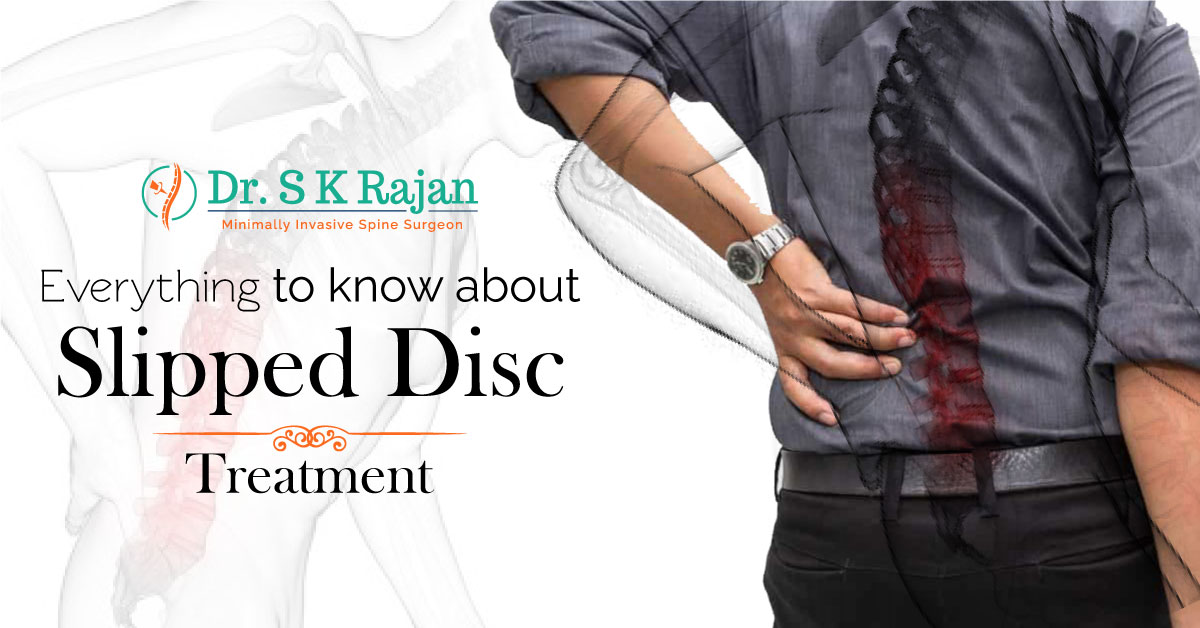
Back pain is something we've all had to deal with at some point, and we tend to either ignore it or rest for a while to help alleviate the discomfort. However, did you know that sudden and severe back pain could signify several more serious health conditions? A slipped disc is just one example of a condition that can cause discomfort. This neurological disorder can lead to paralysis and other severe consequences if left untreated.
Our spinal discs are cushion-like organs that sit between the bones of our spinal column. In addition to providing cushioning between the vertebral bones, these shock-absorbing discs protect the spinal column from injury from everyday activities such as walking, running, and weightlifting. When these discs are damaged or weak, the inner portion of the disc protrudes through the outer ring. Sliding or protruding discs is the medical term for this condition. Spinal nerves may be compressed, in addition to pain and discomfort. This, in turn, can lead to numbness and pain in the nerve affected by the injury. Severe cases of the slipped disc may necessitate surgical repair.
Slipped discs can affect any part of your spine, from your neck to your lower back. The problem is that your lower back is more susceptible. Injuries caused by a slipped disc can range in severity and location.
See a doctor immediately if you are experiencing severe slipped disc symptoms and cannot carry out your daily routine.
First and foremost, your neurologist will conduct a physical examination to ascertain what's triggering your symptoms. For this, he will thoroughly examine your nervous and muscular systems to determine the source of your discomfort. Your doctor may also inquire as to whether or not moving or touching the affected area causes pain and whether or not any activity worsens the discomfort. Additionally, he is likely to inquire about your first symptom. A doctor SK Rajan may suggest one or more of the following imaging tests after reviewing your symptoms and medical history to rule out disc herniation:
Medication: Pain relief is achieved through the administration of medications. It doesn't fix the problem. You may be prescribed regular over-the-counter medicines, to begin with. However, if this does not alleviate your symptoms, you may be prescribed muscle relaxants. While anti-depressants are sometimes used, they're not always necessary. Painkilling endorphins can be boosted by taking these supplements. A potent medication can be delivered directly to the site of pain using spinal injections.
Physical Therapy: Short-term pain relief and long-term conditioning to prevent further injuries are possible outcomes of physical therapy. Physical therapy In physical therapy, there are both passive and active treatments. Passive treatments help you relax, while active treatments help you build strength.
Deep Tissue Massage: If you're looking for a deep-tissue massage, you'll need a professional to perform it. Massage therapy is well-known for improving circulation and, as a result, providing the muscles with more nutrition.
Heat/Cold Therapy: There are two distinct approaches to heat/cold therapy, which can be highly beneficial. Cold therapy is used to reduce blood flow, while heat therapy is used to increase it. When relieving pain, heat relaxes the muscles, while cold reduces inflammation and spasms.
Hydrotherapy: This can be as simple as soaking in a bathtub or a Jacuzzi. It is safe and easy for muscles to relax in the water.
Electrotherapy: A machine that sends low-voltage electric currents through your body is used in electrotherapy. Using these electric stimulations, endorphins, the body's natural pain-relieving hormone, are stimulated. TENS and Interferential therapy (IFT) are among the treatments that are used.
Spinal Traction: This procedure involves stretching the spine to relieve pressure on the discs. v. Spinal Traction: Manually or mechanically, this can be accomplished.
Core Exercises: The abdominal muscles aid in the stabilization of our spine. A weak core can cause pain in the lower back. A physical therapist can strengthen muscles for a variety of reasons.
Flexibility & Muscle Strengthening: If you follow a trainer's instructions, it is possible to learn exercises that can help prevent another slipped disc from occurring in the future. Strengthening muscles and increasing flexibility are two benefits of aerobic exercise.
Hydrotherapy: In addition, hydrotherapy can be used as an active therapy. One such activity is water aerobics. Muscles that are worked out in water not only relax but also get more robust.
People who have already suffered from a herniated disc have a slightly higher risk of suffering another, but it's doubtful.